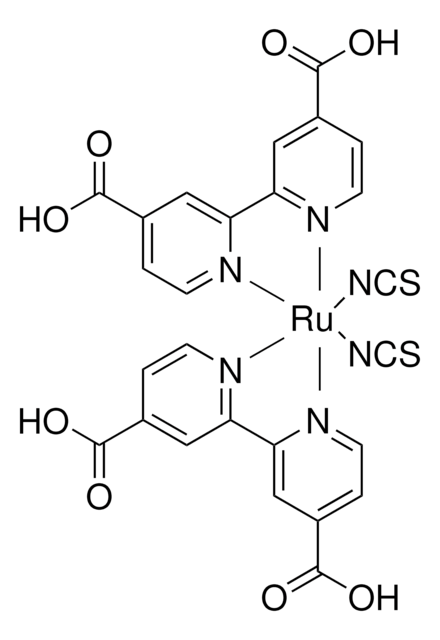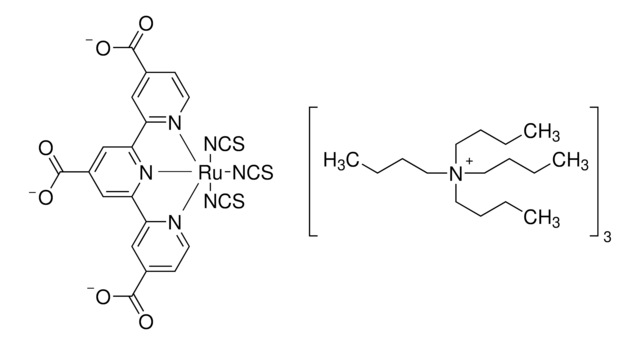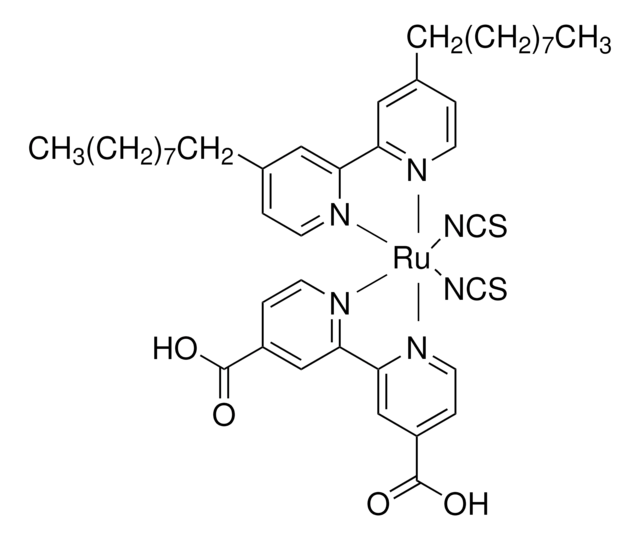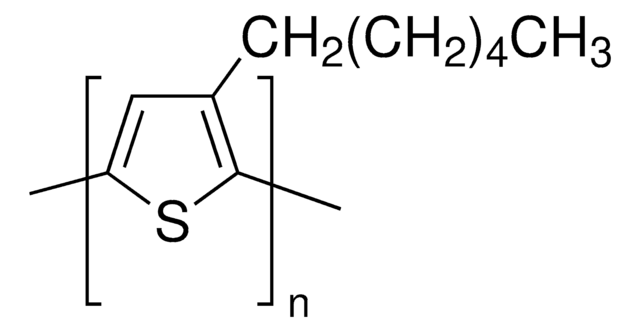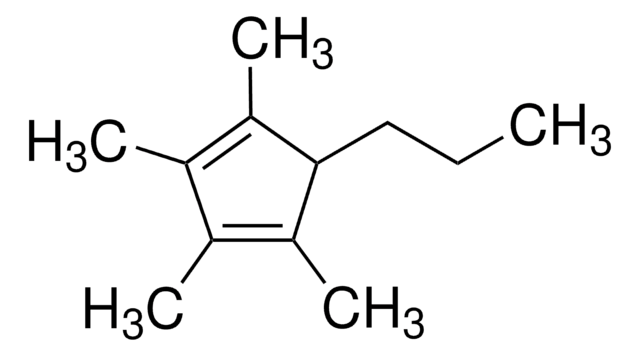703214
Di-Tetrabutylammonium cis-bis(isothiocyanato)bis(2,2′-bipyridyl-4,4′-dicarboxylato)ruthenium(II)
95% (NMR)
Synonym(e):
N-719-Farbstoff
About This Item
Empfohlene Produkte
Assay
95% (NMR)
Form
powder
Zusammensetzung
Dye content, ≥90% HPLC
mp (Schmelzpunkt)
250-260 °C
λmax
534, 393, 313 nm (lit.)
SMILES String
S=C=N[Ru]N=C=S.CCCC[N+](CCCC)(CCCC)CCCC.CCCC[N+](CCCC)(CCCC)CCCC.OC(=O)c1ccnc(c1)-c2cc(ccn2)C([O-])=O.OC(=O)c3ccnc(c3)-c4cc(ccn4)C([O-])=O
InChI
1S/2C16H36N.2C12H8N2O4.2CNS.Ru/c2*1-5-9-13-17(14-10-6-2,15-11-7-3)16-12-8-4;2*15-11(16)7-1-3-13-9(5-7)10-6-8(12(17)18)2-4-14-10;2*2-1-3;/h2*5-16H2,1-4H3;2*1-6H,(H,15,16)(H,17,18);;;/q2*+1;;;2*-1;+2/p-2
InChIKey
MQGCPZMVNHGIPF-UHFFFAOYSA-L
Allgemeine Beschreibung
Anwendung
Rechtliche Hinweise
Signalwort
Danger
H-Sätze
P-Sätze
Gefahreneinstufungen
Resp. Sens. 1
Lagerklassenschlüssel
11 - Combustible Solids
WGK
WGK 3
Flammpunkt (°F)
Not applicable
Flammpunkt (°C)
Not applicable
Persönliche Schutzausrüstung
dust mask type N95 (US), Eyeshields, Faceshields, Gloves
Analysenzertifikate (COA)
Suchen Sie nach Analysenzertifikate (COA), indem Sie die Lot-/Chargennummer des Produkts eingeben. Lot- und Chargennummern sind auf dem Produktetikett hinter den Wörtern ‘Lot’ oder ‘Batch’ (Lot oder Charge) zu finden.
Besitzen Sie dieses Produkt bereits?
In der Dokumentenbibliothek finden Sie die Dokumentation zu den Produkten, die Sie kürzlich erworben haben.
Artikel
Dye solar cells (DSCs) are third generation solar cells with the promise of high efficiency combined with low production costs. While present day DSCs provide light-to-electricity conversion of up to 11%, significant further improvement is envisaged through optimized materials and novel cell and module architectures.
Dye-sensitized solar cells directly convert sunlight to electricity
Over the last decade, dye-sensitized solar cells (DSSCs) have attracted much attention because these unconventional solar cells exhibit high performance and have the potential for low-cost production.
One of the more traditional photovoltaic devices, single crystalline silicon solar cells were invented more than 50 years ago, currently make up 94% of the market. Single crystalline silicon solar cells operate on the principle of p-n junctions formed by joining p-type and n-type semiconductors.
Unser Team von Wissenschaftlern verfügt über Erfahrung in allen Forschungsbereichen einschließlich Life Science, Materialwissenschaften, chemischer Synthese, Chromatographie, Analytik und vielen mehr..
Setzen Sie sich mit dem technischen Dienst in Verbindung.
